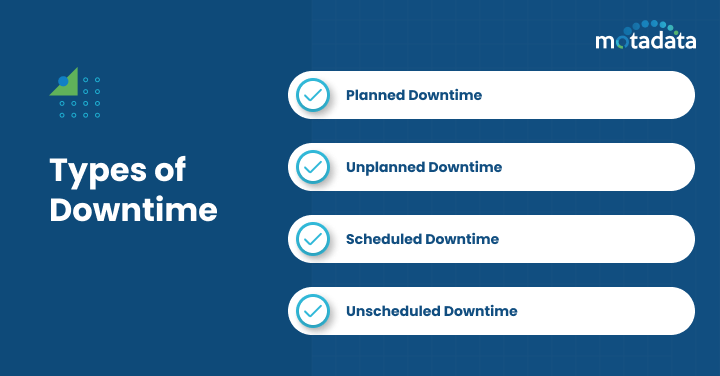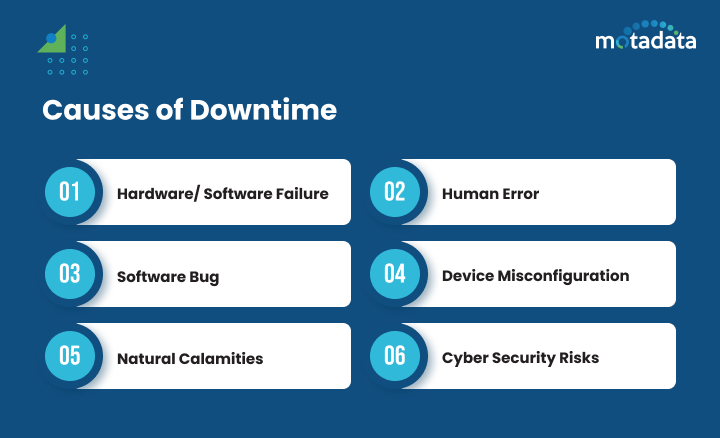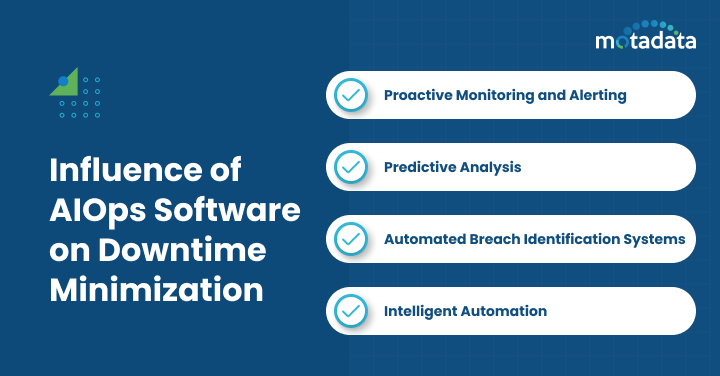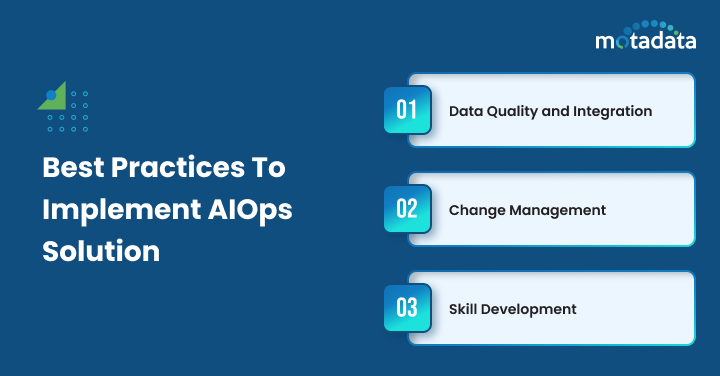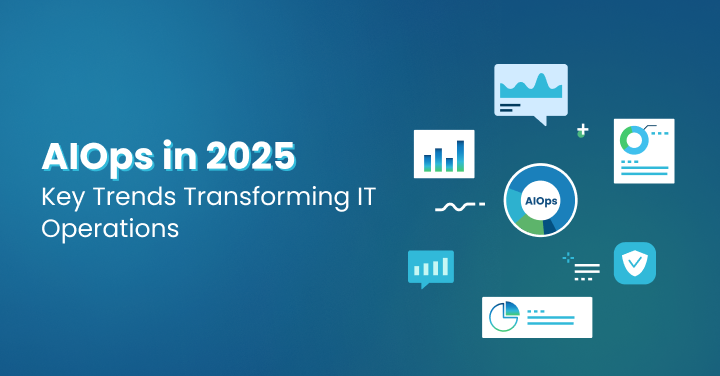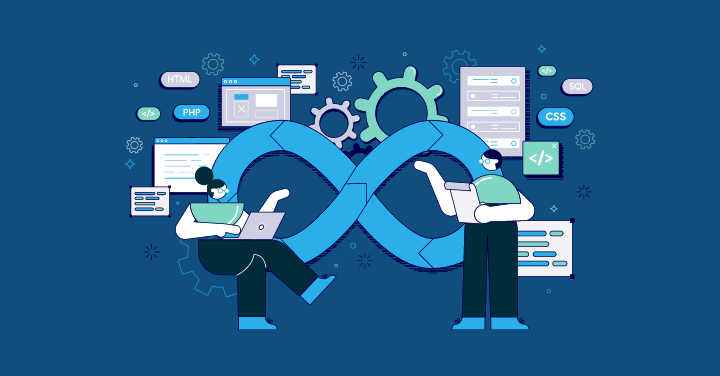Introduction
Let’s Imagine your team is working on a big IT project and suddenly there is an unexpected downtime. Your server fails and data remains inaccessible. Sounds scary, right? Indeed, it is.
The IT sector is transforming into new dimensions and so, proper IT operations is a key factor to stay ahead of the competitors.
However, as the infrastructure of any IT-intense firm grows, managing them becomes increasingly difficult.
Besides, it also makes the management of the IT systems with conventional techniques challenging due to digital transformation and increasing complexity of the IT systems. This is where AIOps plays a big role.
The AIOps platform are expected to have a market share of USD 32.4bn by 2028. Surprising, right?
This stat obviously points to the increasing need for the AIOps solution.
Here, you will learn more about the role of Artificial Intelligence for IT Operations in decreasing downtimes and increasing efficiency. Let’s dive in!
Brief Overview of AIOps
AI in IT Operations is denoted as AIOps where A stands for artificial intelligence, I stands for IT operations analysis and O is for Optimise systems through AI for Machine learning thereby improving the running of IT systems.
The AIOps platform can process vast volumes of data sources quickly.
Thus, it makes it easy for organisations to conduct anomaly detection, pattern identification and subsequently predict potential challenges.
AIOps seamlessly integrates various disciplines including ML, AI, and Big Data in a central location.
The main purpose is to provide a comprehensive view of IT processes.
Artificial Intelligence for IT Operations helps to improve and automate IT operations.
This approach enables the IT teams to manage the IT environments well, make the data-driven decisions without much manual interventions.
The primary objective is the improvement of effectiveness and productivity of IT systems.
The Problem of Downtime
Without a doubt, for any enterprise IT outages could be costly.
For large corporations, it can cost approximately USD 9,000 per minute, especially in terms of downtime. Seriously? Yes!
However, its impact is not just limited to financial losses. Delays in the delivery of services can negatively affect customer satisfaction.
Eventually, it can hamper the reputation of the company. Moreover, continuous cycles of downtime can even impact the morale and productivity of the engineers.
Therefore, reducing downtime has become a top priority for every business.
It helps lower costs, boost productivity, and increase the revenues of organisations.
How AIOps Can Help?
As AIOps can prevent issues and report them to the IT department more proactively, they can reduce downtime and enhance the IT operations faster.
Also, it can solve automate issues sans the necessity of human interference.
The AIOps software also helps slow down outages by providing end-to-end visibility and context.
Further, it breaks down data silos and allows efficient monitoring of IT operations and services.
Understanding Downtime
Simply put, downtime is a period where database systems are unavailable or inaccessible.
It can be a planned downtime or an unexpected disruption, leading to non-functionality of the database.
While it is only a temporary shutdown of IT services, its ramifications are very extensive to businesses.
Read on to explore everything about downtime!
Types of Downtime
1. Planned Downtime
Planned downtime is anticipated well in advance and is usually carried out during weekends, holidays, or after hours.
That’s mainly because of scheduled activities which may include system backups, maintenance, upgrades, and migration of databases from one platform to another.
2. Unplanned Downtime
Unplanned downtime refers to unforeseen downtown where data is not available when required.
It can result due to sudden system failure, malicious attacks on IT systems, or human error.
3. Scheduled Downtime
Scheduled downtimes are usually planned and communicated before five business days to all the system users.
The core aim is to ensure uninterrupted business operations and facilitate appropriate preparation.
4. Unscheduled Downtime
The system downtimes which aren’t communicated under 24hrs are referred to as unscheduled downtime.
Generally, these are triggered by unpredictable failures.
Causes of Downtime
Are you wondering why system downtimes in organisations? Well, there are several causes. Delve into the most common causes!
1. Hardware/ Software Failure
If your organisation is using outdated software or old hardware, the chances of system outage and application failure become very high.
Moreover, hardware and software that have been in use for years degrade with time, resulting in inefficient performance and affecting productivity significantly.
2. Human Error
Carelessness or intentional actions are not the main factors, human error is bound to happen.
For example, inadvertent disengagement of a cable from a socket or an unintended erasure of information may lead to expensive losses in terms of operation time.
3. Software Bug
The existence of potential bugs in the operating system of a server can affect the overall performance and cause security issues.
Moreover, if patches do not get applied on time, it can lead to server failure and costly downtime to your organisation.
4. Device Misconfiguration
In cases of improper configuration of IoT devices, unforetold inactivity may be experienced.
Configuration issues, on the other hand, may leave a cyber security loophole in a network making it prone to cyber security attacks.
5. Natural Calamities
On top, natural calamities like earthquakes, floods, hurricanes, etc. will also interfere with the communication network and electricity supply.
6. Cyber Security Risks
IT downtime can also occur through cybersecurity attacks such as phishing and ransomware attacks.
Such threats like shut down all your business operations and bring your organisation to a standstill.
Impact of Downtime
The consequences of downtime are many. Read on to explore the most common impact!
Operational Disruption
Extended downtime can create a variety of functional problems for organisations.
During this time, customer service requests cannot be fulfilled that hampers customer experience.
Also, the productivity of employees is affected as they have to sit idle.
Financial Losses
Due to downtime, the IT operations of businesses come to a standstill.
Resultantly, it can cause a major loss of revenue. Moreover, investing in recovery efforts and fixes can further add to the financial burden of organisations.
Reputational Damage
Brand image is indeed vital for the success of any business.
However, due to downtime, customers fail to access your products and services.
It can ultimately lower the trust of customers in your organisation, thereby resulting in reputational damage.
The Influence of AIOps Software on Downtime Minimization
Are you in quest of strategies to tackle business downtime and increase your revenues? It is time to harness the power of the AIOps platform.
Read on for more information on how this intelligent technology can assist in the minimization of downtime in business operations.
Proactive Monitoring and Alerting
Traditional IT management solutions are usually reactive.
That means they focus on addressing only after they have occurred and caused disruptions. When it comes to AIOps though, things are different.
Artificial Intelligence for IT Operations deploys a 24/7 monitoring of all IT infrastructures and systems, gathering a plethora of IT data and scrutinising logs as they come in.
AIOps software identifies present abnormalities and notifies the IT department before problems escalate to downtimes or complete system breakdown.
Read Also: Proactive Network Monitoring: A Key to Network Reliability
Predictive Analysis
Artificial Intelligence for IT Operations utilises ML and predictive analysis to identify potential failures as well as ascertain proactive resolution.
Predictive analysis helps a lot in keeping your Artificial Intelligence applications and networks secure.
It can effectively analyse trends in application performance, system usage, and failures.
As a result, it becomes easy to predict when the software or hardware components will fail.
So, the IT teams can ensure timely maintenance and prevent unexpected downtime.
Besides, AIOps can help predict the demand depending on patterns.
It allows proper scaling of IT resources to minimise the chances of overloading and avoid performance management issues.
Automated Breach Identification Systems
Apart from helping the IT employees put out the fire created by any downtimes caused in the system, AI for IT Operations can understand what issue caused the IT glitches and where in the architecture it lied.
It can analyse the historical logs as well as data and allow the identification of the root cause.
Besides providing detailed insights and advanced analytics into the cause, Artificial Intelligence for IT Operations can also recommend corrective actions to the IT team.
Also, it can significantly minimise the time taken by your team to diagnose the root cause of an issue, thereby facilitating faster resolution.
Intelligent Automation
Doing the same tasks over and over again can be frustrating for the IT operations team.
Moreover, it can even lead to human errors. That’s where the role of AIOps comes in.
AIOps solution can automate the routine tasks and free up your IT professionals for better strategic initiatives.
From reallocating resources to restarting services, it can automate everything and minimise human intervention.
As a result, it can help lower potential human errors and minimise unwanted interruptions significantly.
Case Studies: Read-World Examples
Gogo, an inflight connectivity provider, is an excellent example of successful AIOps adoption.
The company keeps track of several hardware, including satellite antennas installed on planes.
However, handling maintenance requests is often challenging.
The key challenge experienced by Gogo was no-fault-found (NFF) requests from their equipment, leading to service downtime and added expenses.
The company required accurate information to predict failure.
So, leveraging Artificial Intelligence for IT Operations, machine learning, and data science, the company developed a predictive maintenance tool.
The tool was capable of predicting failures about 20-30 days in advance with nearly 90% accuracy.
As a result, the company became successful in minimising downtime and ensuring better cost savings.
Best Practices To Implement AIOps Solution
Are you ready to leverage AIOps solution to lower downtime in your organisation?
In that case, having an idea of the best practices matters a lot. Continue reading to know the key practices in the industry.
1. Data Quality and Integration
Effective AIOps demand good data quality. Moreover, reliable and accurate sources are essential for big data analytics in AIOps.
It can assist in offering valuable insights and ascertain faster predictions.
Therefore, it is important for organisations to have strong data governance in place and enhance the reliability of data.
Apart from that, proper data collection and integration also matters a lot.
AIOps can offer the best outcomes when information from diverse sources is effectively combined in the IT environment.
By connecting data from logs, monitoring software tools, and ticketing systems, getting a complete view of IT operations becomes simple and easy.
2. Change Management
When it comes to adoption of Artificial Intelligence for IT Operations, the need for changes in IT workflows and processes cannot be overlooked.
Effective change management is vital to ensure a smooth shift and allow everything in the organisation to accept the new approach.
For effective change management, learn the changes that AIOps software implementation would bring and address employee resistance.
Communicate with your ITOps team members and highlight the key benefits of AIOPs.
Moreover, you can also run training programs to help your team acquire the necessary skills.
Besides, make sure to involve the key stakeholders throughout the AIOps adoption process.
3. Skill Development
Implementing and using AIOps would require your IT and DevOps teams to acquire new skills.
They may require skills relating to data analytics, machine learning, and artificial intelligence. Therefore, upgrading their skills is the need of the hour.
Organisations can provide training programs and run workshops to make the most of AIOps tools.
Also, they can motivate employees to get industry certifications.
Equipping your team members with the right skills can enable them to confidently use AIOps.
Conclusion- AIOps Marketing on the Rise
The demand for AIOps in the IT landscape will continue rising in the years to come.
Therefore, there is a continuous rise in AIOps marketing.
It has a critical function in preventing outages by predicting them; enhancing proactive IT service management; enabling quicker problem identification and rectification; and promoting continuous improvement.
Moreover, it can help minimise manual work, lower huma errors, offer value-driven data, and improve customer satisfaction.
Are you all set to bring down the risk of downtime and drive maximum business outputs? It is time to partner with professionals, explore AIOps, and implement them effectively.
FAQs:
Yes, there is a difference. The traditional IT operations concentrate on solving IT issues once they have occurred.
However, AIOps focuses on the application of ML and AI to analyse patterns and spot problems before they occur. As a result, ensuring proactive resolution becomes easy.
AIOps utilises predictive analytics to forecast potential system failures or slowdowns. It allows the IT personnel to plan maintenance early and prevent expensive downtimes.
Yes, AIOps can be leveraged in diverse IT environments. It can effectively manage cloud computing, hybrid cloud, while ensuring a stable on-premised system performance.
When implementing AIOps, organisations may face potential issues. It can range from a lack of appropriate skills, integration difficulties, and resistance from the team members.
Aside from the obvious benefits of Enhanced efficiency and Reduced cost, a number of factors such as enhanced efficiency and reduced cost among others are used to consider the return on investment of implementing AIOps.



